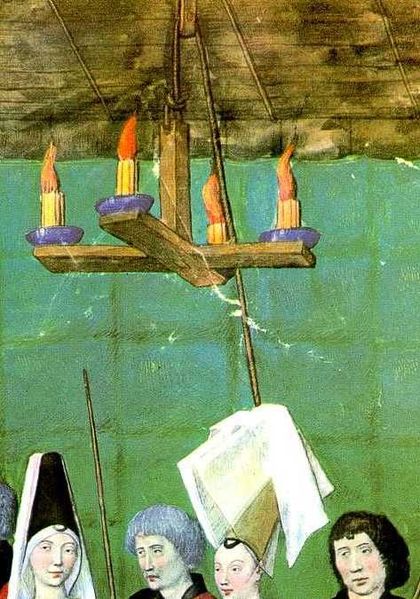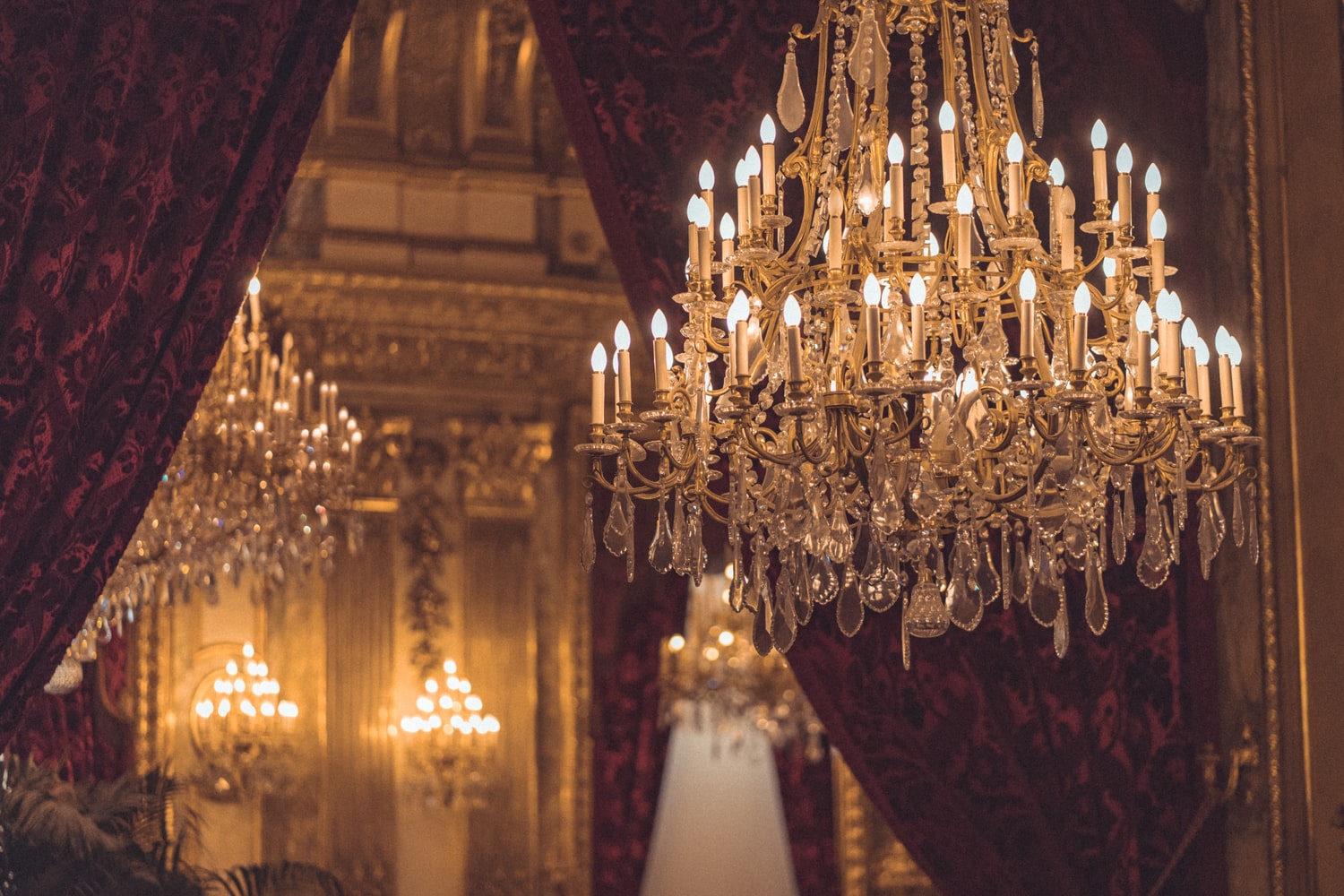One of the most striking décor items you can have in a room is a chandelier. They’ve been around for over a millennium and still represent elegance and class. There’s nothing like walking into a vast hall that’s lit up with a huge glittering chandelier overhead. Even in smaller rooms, the addition of a chandelier really uplifts the look of the place. Their light is often bright yet soft. Mainly, a warm golden glow that envelops everything in the room and produces a very positive atmosphere.
But when did chandeliers first come about? What were they like at the time of their inception? Where were they used before they became mainstream? Every piece of furniture has had a rich and fascinating history, and chandeliers are not different in that regard. So in this post we’ll be talking about the chandelier, a beautiful form of lighting that has been around for ages and ages, and how it and its uses have evolved over the centuries.
Inception
The first chandeliers appeared in the Medieval Era, around the 9th Century. Originally consisting of wooden beams shaped like a cross, these early model chandeliers were mostly only used in churches, and later on, royal palaces and other important buildings. The four wooden beams would have a candle at each end, lighting up the room much better than the usual forms of lighting of that time. Though crude in design when compared to the intricate models available today, it is still clear that this form of lighting signified importance, power, and royalty. Relative to the lighting methods of that era, the chandelier was a source of pride, and no doubt looked impressive to the greater masses.
Design Evolution
As the centuries passed and mankind progressed in terms of technological know-how as well as craftmanship, so did the chandeliers and their corresponding designs. The early crude models were ditched in favor of more aesthetically pleasing styles of chandeliers around the 15th Century. These mostly consisted of closed-loop designs, as the cross shape was changed into a ring and crown shape instead. By this time the use of the chandelier had grown massively as well. Though still quite expensive and very much out of the reach of the lower-class citizens, it saw popularity amongst the rich and famous. Even the merchants who made it big and got successful off of trade used to buy chandeliers for their homes. By now, the chandelier was as much a sign of status as it was an object for lighting up your house.
In the following couple of centuries the chandelier slowly made its way into the houses of the working class. Though finally being used almost everywhere, the designs and the material used for crafting it now took place in distinguishing between the different class of citizens. The lower-class houses would have simple chandeliers that were wrought from inexpensive materials like wood, iron, or tin. Meanwhile, the houses belonging to the wealthy would have intricately wrought chandeliers of gold and other expensive materials hanging from their ceilings. This evolution in its use signified the progress humanity had made in terms of civilization and society.
Chandeliers In The 18th Century
As the 18th Century arrived, chandelier design progressed in the complexity associated with that time. Long, curving, ornate arms sprouted from the base of the chandeliers, each supporting a candle at the end. These magnificent works of art were an instant hit with the wealthy, as they loved the mysterious air around these new designs. The 18th Century was also the time when creative experimentation led to the invention of crystal chandeliers. These new chandeliers that supported multiple crystals or mirrors strategically placed around the lights rose in popularity and use extremely fast. Their refracted lighting was not only insanely pretty to look at, it also lit up rooms more effectively than any chandelier before. This design was so popular that it is still in use all over the world today, and there is a very high chance you are already familiar with it.
During the 18th Century a lot of new designs were produced as well. From chandeliers with small decorative sculptures on them, to colored glass and hollow interior chandeliers, the market saw an explosion of diversity when it came to chandeliers. The addition of small leaves, flowers, and fruit also enhanced the many designs of chandeliers available for purchase. It wasn’t long before massive chandeliers were being used in important places and holy sites to light up the large halls housed within their walls.
Gas And Electric Chandeliers
As the 19th Century began and the years progressed, gas lighting became common and widespread amongst the masses. As this change took place it was reflected in the designs of chandeliers being made at that time. In a few short years almost all chandeliers in use were replaced with ones that used gas for lighting. This wasn’t long-lived however; as electricity soon became mainstream too. At first, gas and electric hybrid chandeliers became popular. But these were soon phased out for electric-only models as the supply of electricity became more reliable and widespread. The introduction of these cheaper variants soon rid the chandelier of its use as a status symbol, and by the 20th Century it had become a common form of lighting used almost everywhere by all kinds of people.
Chandeliers Today
Today, chandeliers are commonplace among many houses and public venues. Huge glittering ones hang from the ceiling in party halls while smaller ones with bulbs shaped like candle flames illuminate your everyday living room. Their status symbol might have been stripped from them, but chandeliers continue to impress and be one of the most elegant forms of lighting in use today. Small changes keep being made to chandeliers; their bulbs having been replaced with fluorescent and now LED variants. But overall the basic premise of the chandelier remains the same; a hanging, most likely circular, form of lighting that employs multiple lights and aims to impress. And we can say without a doubt, that it does its job very well.
Conclusion
It’s always fascinating to learn about a common everyday item’s past. You never expect its history to be so rich and detailed yet it almost always turns out to be. The chandelier is no exception and we believe, after having read this post, you agree with us. We’ve always got other fun stuff for you to read, and if you’re looking for some recommendations we’d start with our post on how to earn money from home. Not your cup of tea? How about our guide on dressing up an everyday table? That’s not all of course. We’ve got tons of other posts too. Search around a bit and you’re sure to find something that catches your fancy.



